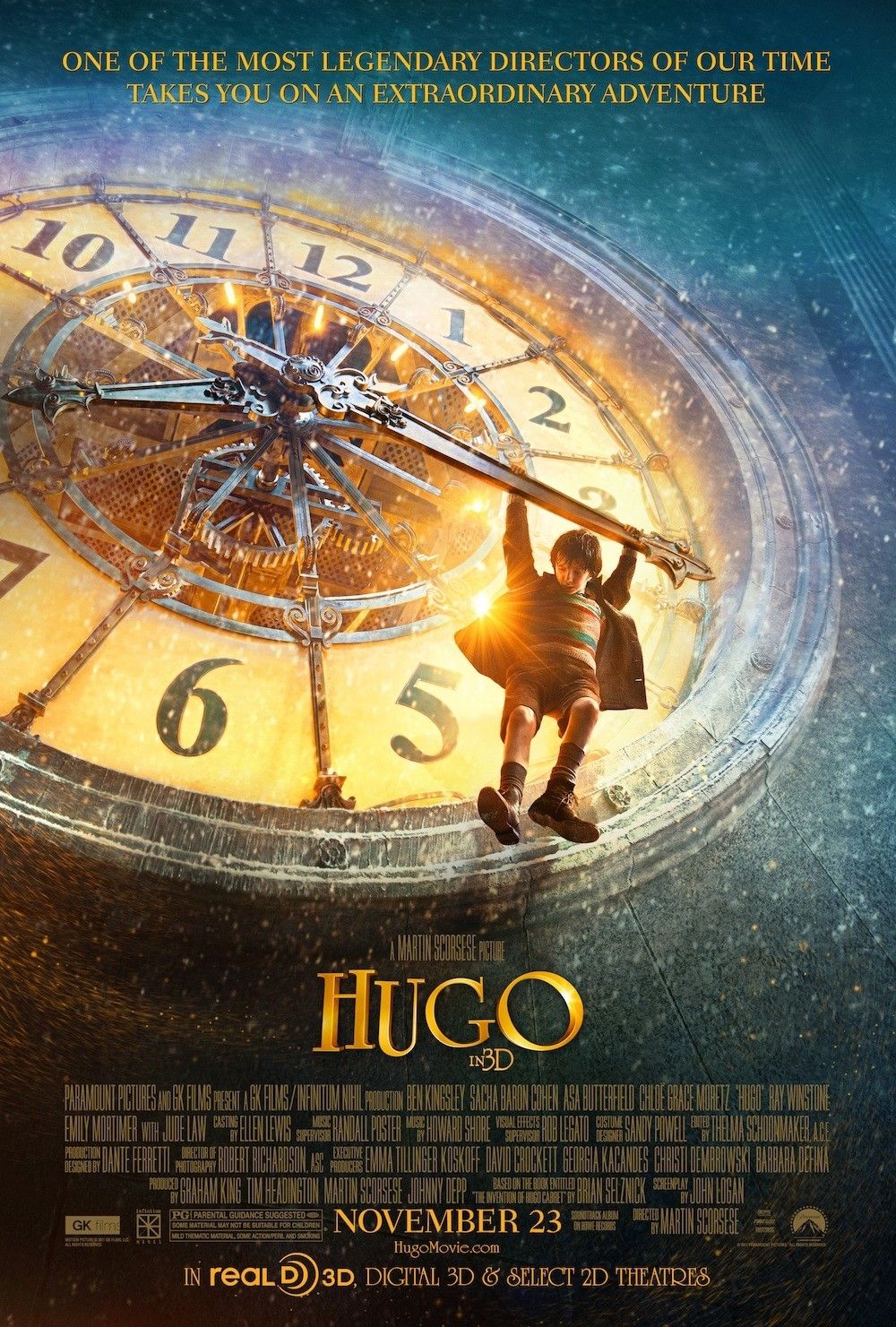Summary
- The most challenging shot in
Hugo
involved intense planning due to strict filming schedules in England. - The VFX marvel of
Hugo
required 5 sets, and a unique rig for smooth movements, but had a limited time to shoot. -
Hugo
struck a balance between spectacle and intimate drama, winning 5 Oscars for its technical prowess.
Hugo’s VFX supervisor describes the film’s most challenging shot. Based on the novel The Invention of Hugo Cabret by Brian Selznick, Hugo is a 2011 film directed by Martin Scorsese. It stars Asa Butterfield as the titular Hugo, who is a young boy living in the walls of a Paris train station, where he is tasked to keep the clocks running. In addition to Butterfield, Hugo’s cast also features Chloe Grace Moretz, Sacha Baron Cohen, and Ben Kingsley.
Speaking with Corridor Crew, Hugo VFX supervisor Robert Legato explains what the hardest shot in the film was. According to Legato, this shot came when Hugo and Isabelle are running through the train station walls as Hugo leads her to his living space.
The difficulty of this shot came primarily from the fact that Legato was only given “12 minutes to shoot this shot” because of the restrictive filming hours in England, where the film was shot. The shot involves incredibly advanced planning, including five sets and a rig that includes moving the set. Check out Legato’s quote below:
So this is two kids, five sets, over the entire length of the production. I had 12 minutes to shoot this shot. And so I had to rehearse it, rehearse it, rehearse it. And then I had, literally, he could only work 4 hours / day in England, so literally it would be like ‘you have 12 minutes starting now.’
So this is this rig. It’s a stereo rig, so it’s one camera on top of another. So I’m actually going straight down and we’re turning the set. That’s the rig.
Why Hugo Is a Rare VFX Marvel
Seeing the behind-the-scenes of this shot is an incredible look into how Hugo was made. Legato and the team were very intentional in how they set up this shot. They kept what they wanted to achieve in mind, capturing the wonder of Hugo’s living space, aligning the audience with how Isabella must be feeling, while still showing the ease with which he moves through the space. In order to achieve this, the camerawork and visual effects had to move smoothly and swiftly, something which, upon rewatching the sequence, Legato clearly achieves well.
Recognizing its technical prowess,
Hugo
won five Oscars in Best Cinematography, Best Sound Mixing, Best Sound Editing, Best Achievement in Visual Effects, and Best Achievement in Art Direction.
Hugo was released in an era where 3D film technology was still on the rise again. Unlike a sci-fi epic like James Cameron’s Avatar, however, Hugo was a more intimate drama. Thus, the Scorsese-directed film had to balance moments of spectacle — like a train crashing through a building, a boy hanging from a clock, or racing through the bowels of a railway station — with quieter character moments. It was important that Hugo was not just a series of protruding items from the screen, but a drama whose VFX-heavy set looks and felt believable.

Every Martin Scorsese Movie Ranked, Worst To Best
Martin Scorsese has one of the most astounding careers in Hollywood history. Here’s a complete ranking of Martin Scorsese’s movies from worst to best.
It is these qualities that made Hugo a lightning-in-a-bottle when it came to 3D of its era. Beyond its obvious visual feats, Hugo is a well-scripted, strongly-cast film that tells a story of loss, wonder, and found family. Watching back the VFX video, it is clear how many green screens, cameras, and wild rigs it took to achieve Hugo, but all of that was worth it for the magical film that was created as a result.
Hugo
is available to stream on Hoopla and Showtime.
Source: Corridor Crew/YouTube

Hugo
Based on The Invention of Hugo Cabret by Brian Selznick, Hugo follows the titular character, a young boy living alone in a train station in Paris. While working to restore an automaton found by his late father, Hugo becomes involved in a mystery surrounding the automaton and filmmaker Georges Méliès. Asa Butterfield stars as Hugo, with Chloë Grace Moretz, Ben Kingsley, Sacha Baron Cohen, and Jude Law as part of the main cast.
- Release Date
- November 22, 2011
- Studio(s)
- Paramount Pictures
- Distributor(s)
- Paramount Pictures
- Writers
- John Logan , Brian Selznick
- Runtime
- 126 minutes
- Budget
- $150 million
